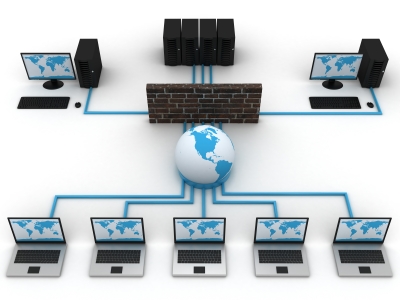You should be, unless somebody’s keeping a vigilant eye on it for you! Not too long ago, in a place not so far away…when ancient hordes attacked your city, a single breach in the wall could mean certain death – or at least the end of life as you know it. Yet times change…or do they? Attacks by today’s cybercriminals on your network, while perhaps not physically life-threatening, can inflict severe damage to the life and health of your business. FACT: The odds of a successful cyber-attack against your business today are one in five. And, at a typical cost of $300,000 or more, a full 60% of smaller businesses that suffer a breach shut their doors for good within six months, according to the National Cyber Security Alliance. So, who’s “guarding the gate” at
the wall could mean certain death – or at least the end of life as you know it. Yet times change…or do they? Attacks by today’s cybercriminals on your network, while perhaps not physically life-threatening, can inflict severe damage to the life and health of your business. FACT: The odds of a successful cyber-attack against your business today are one in five. And, at a typical cost of $300,000 or more, a full 60% of smaller businesses that suffer a breach shut their doors for good within six months, according to the National Cyber Security Alliance. So, who’s “guarding the gate” at
your company’s network? The problem with keeping your network safe today is that these attacks don’t just happen randomly – they are constant and unrelenting. Ever more sophisticated “robot” software is making it easier than ever for attackers to stalk the Internet, probing for vulnerabilities 24/7. Here are just a few of the ways these vigilantes can penetrate your network’s defenses: An SQL Injection can destroy your database, steal e-mail addresses, usernames and passwords, gain access to sensitive client management and billing data, deface your web site and defraud your business. It’s also now the most frequent mode of attack. Open Ports – An open port is basically a channel for Internet data to connect with devices on your network. A firewall normally filters data, but hacker “web-bots” constantly probe for vulnerabilities.
When they find an open port, and if they have installed malicious code inside your system, they are then able to control your devices. In a DDoS attack, a network of computers attacks a single server with a surge of traffic, forcing it to crash. They most often target political organizations and banks; however, small businesses are also at risk. To avoid getting shut down, you need a defense plan in place and around-the-clock monitoring. Malware and Viruses. Unfortunately, anti-malware and antivirus software programs in reality often fall short of claims, leaving many SMB networks highly vulnerable. The problem is twofold: First, they only detect a breach after the malware or virus has infected your system. Second, detection solutions often lag behind the latest threats by days or even weeks, leaving a big window for them to inflict heavy damage.
Targeted E-mails – Cybercriminals seem to get better each day at creating enticing e-mails that innocent readers will click on without a moment’s thought. If that reader happens to be on your network, you now have yet another hidden attacker to deal with. “Drive-By Downloads” are a client- side intrusion where a person in your network innocently picks up a nasty bug… Credit Card Theft – How would you feel if one of your customers’ credit cards got hacked due to a flaw in your security? Now imagine how you would feel if that incident turned into a lawsuit… Yet that is exactly what can happen if your DLP (Data Loss Prevention) system isn’t up to snuff. As you’ve no doubt seen in the news, credit card data theft is now epidemic. To keep customer data safe and maintain PCI compliance, it’s absolutely crucial to make sure your DLP is on duty 100% of the time.
As cybercriminals (and foreign government agents) hone their evil craft, we must now be on guard, as our businesses grow ever more web-dependent. Yet how do you find the time to keep up with it all, much less make sure your networks safe?
Lucky for you, there’s a silver dagger…
Free Network Security Scan – From now until the clock tolls midnight on Thanksgiving, November 26, call us and receive a FREE Security scan for your network – Priced at $2,500 during “normal” sessions – as a thanks for reading our newsletter. As the Guardian Small Business Network states in a January 2015 article, “Hiring experts to ensure your IT systems and web site are secure makes sense, as does picking the right payment provider and
educating staff.”
Claim yours now by filling out the form below!

If you found this article to be useful please feel free to share using the links provided below!
Comment